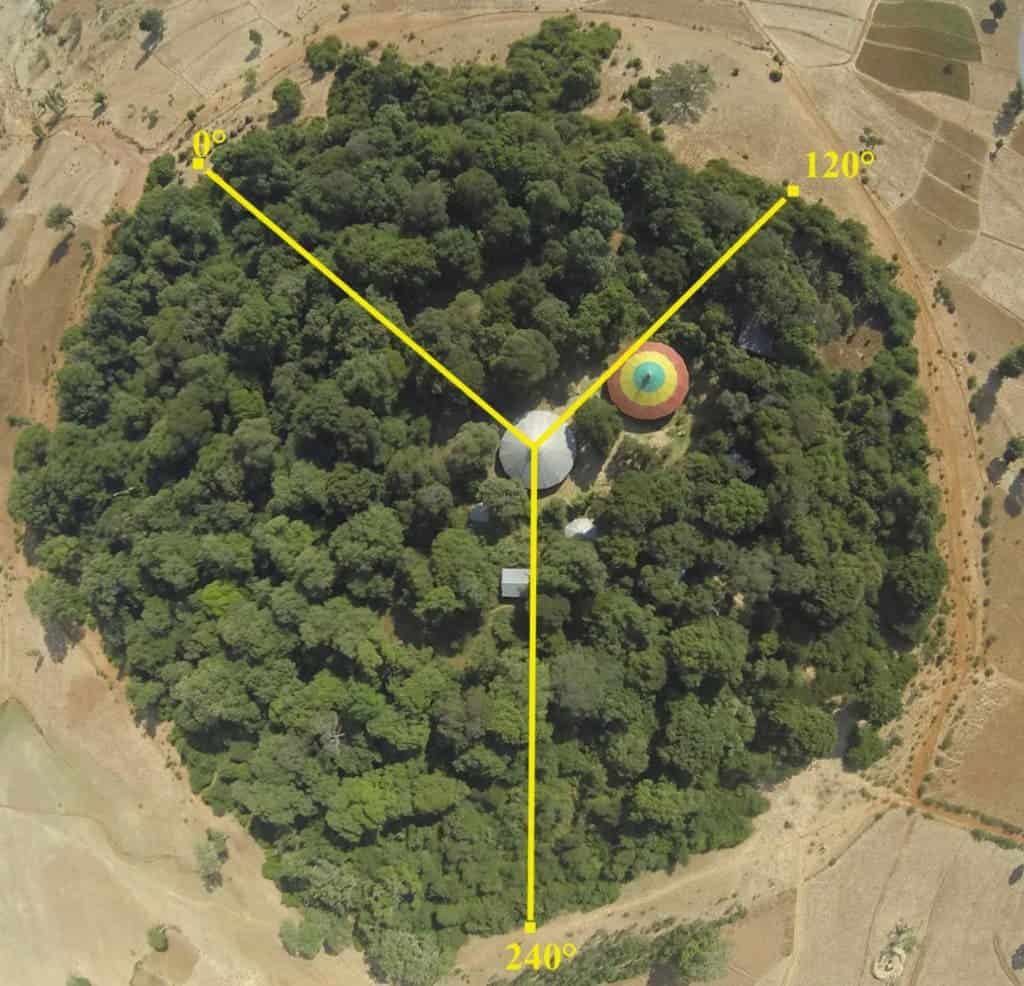In Ethiopia, churches are surrounded by forests — a unique tradition which fosters a rich biodiversity and a special cultural environment. But now, this hallmark of Ethiopia is increasingly under threat.

Going to the church is always supposed to be a spiritual experience but in Ethiopia, it’s like stepping into a different world. Lush, green forests provide an unusual refuge from the arid landscape that’s so common in the country.
If you see a forest in Ethiopia, there’s probably a church in its center. These small but fertile oases are dotted across the country — some of the last remains of the tall natural forests which covered a third of the country but now have been reduced to under 4% of Ethiopia’s surface.
Ethiopia hosts over 100 million people, a growing population which shows no signs of slowing down. Around 80% of them live in rural areas and rely on subsistence farming. To feed them, many natural habitats were destroyed to make way for agriculture. Forests were the first to fall. The need for firewood was easily supplied by the invasive eucalyptus, which grows fast, and the rest of the forest was replaced with arable land.
But trees found an unexpected sanctuary: churches. Ethiopian Orthodox churches, which have served as cultural centers for centuries, are surrounded by forests. While they are small enclaves in a largely arid landscape, they provide several vital purposes. In addition to providing a space for spiritual activities, they also provide temperature and humidity regulation. Forest biodiversity is also vital for agriculture, serving as a home for the birds and insects that pollinate the crops and keep pests under control. They also sequester carbon, conserve water, reduce soil erosion and provide natural medicine — but even these enclaves are under threat, both from the outside and from within.
A recent study analyzed 44 sacred church forests in South Gondar, a region from northern Ethiopia. Researchers found that over half of these forests are significantly disturbed, and the smallest forests are under the greatest threat.
“Ethiopian sacred church forests are the last remaining forests in northern Ethiopia and are biodiversity refugia and integral to the lives of local people. The integrity of these sacred forests is compromised by high disturbance (56%), which is negatively associated with decreased species richness and lower tree abundance, which may negatively impact human livelihoods,” says Catherine L. Cardelús of Colgate University in Hamilton, NY.
External clearings are one problem, but another problem highlighted by the researchers is the development of buildings and structures with a religious purpose. Researchers explain that while these developments are of course culturally important, they can have a negative effect on the forest, and they recommend that such further developments be done with conservation in mind.
Conservation strategies too might need to be re-analyzed. Grazing animals, which find refuge in the cool shade provided by the forests, were thought to be a great threat to church forests. Protective walls which were built to keep these animals out, but the walls have only had a minor positive effect and required substantial effort to be built. Had the same effort been invested in another strategy, results might have been more significant.
Lastly, invasive or exotic species (especially eucalyptus) are also creeping into these forests, threatening native wildlife. Reforestation efforts, while important, need to focus on the native species. For instance, eucalyptus requires more water than other trees and is more prone to forest fires.
There is still hope for the Ethiopian church forests though. Biologists and conservationists have teamed up with priests to help preserve these unique habitats, hoping to further develop the role as the churches into conservation centers. When the priests and villagers were shown birds-eye views of the forest, they were stunned, and understood that the church forests are the last pockets of a biodiversity that is almost wiped out. Some priests are increasingly acting as stewards not only towards the church grounds, but also to the forest itself — and the symbolism is quite fitting. We are, both in the biblical and in the practical sense, stewards of the Earth. It’s high time we act like it.
Journal Reference: Cardelús et al Human disturbance impacts the integrity of sacred church forests, Ethiopia. PLoS ONE 14(3): e0212430. https:/


